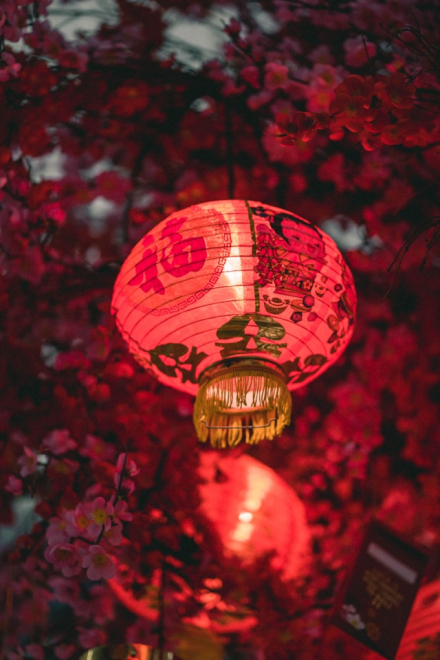- Change theme
The Most Important Flowers in Chinese Culture and Poetry

Flowers hold a special place in Chinese culture, symbolizing not only beauty but also deep emotions, virtues, and philosophical ideals.
16:58 16 April 2025
Flowers hold a special place in Chinese culture, symbolizing not only beauty but also deep emotions, virtues, and philosophical ideals. If you learn Chinese online or study with an online Chinese teacher, you’ll quickly notice how often flowers appear in classical poetry, paintings, and idiomatic expressions. These flowers aren’t just admired for their appearance — they tell stories, convey moral values, and reflect the spirit of ancient Chinese thought. Let’s explore ten of the most important flowers in Chinese culture and their poetic significance.
Taohua (桃花) — Peach Blossom
Peach blossoms are among the most romantic symbols in Chinese culture. They represent love, vitality, and the freshness of spring. In Chinese poetry, taohua often appears in scenes of youthful beauty and passionate longing. A famous example is Tang dynasty poet Zhang Xu’s poem where peach blossoms by a stream hint at fleeting love. The modern phrase "桃花运" (taohuayun) still refers to good fortune in romance.
Yinghua (樱花) — Cherry Blossom
Though often associated with Japan, cherry blossoms hold a place in Chinese poetry as well. They symbolize purity, beauty, and the fleeting nature of life. Poets use yinghua to express emotions of delicate love and the sadness of impermanence. Their brief bloom has made them a timeless metaphor for transient beauty and lost youth.
Meihua (梅花) — Plum Blossom
One of China’s most beloved flowers, plum blossoms bloom in the cold of late winter, symbolizing perseverance, purity, and resilience. Meihua is one of the “Four Gentlemen” (四君子) and one of the “Three Friends of Winter” (岁寒三友) along with pine and bamboo. Song dynasty poet Lu You wrote of plum blossoms as a reflection of unyielding character and hope amid hardship.
Mudanhua (牡丹花) — Peony
Known as the “King of Flowers,” the peony stands for wealth, honor, and prosperity. It is a frequent subject in Tang dynasty poetry and imperial art. During Emperor Xuanzong’s reign, peonies became the symbol of aristocratic elegance. Poets described them as grand and luxurious, embodying both worldly success and natural grace.
Lianhua (莲花) — Lotus
The lotus represents purity, enlightenment, and spiritual integrity. It rises clean and beautiful from muddy waters, which has made it a symbol of moral strength and purity of heart. Zhou Dunyi, a Song dynasty philosopher, praised the lotus in his famous essay On the Love of the Lotus, seeing it as a metaphor for the virtuous person, untouched by the corruption around them.
Guihua (桂花) — Osmanthus
The osmanthus flower, with its sweet fragrance, represents autumn, prosperity, and noble character. Its tiny yellow or white blossoms appear in early autumn and are beloved in both gardens and poetry. Ancient poets praised its fragrance as a delicate presence that lingers in the air, symbolizing refined elegance and success. The phrase "折桂" (zhegùi) even means “to achieve high honors” in the imperial examinations.
Ju Hua (菊花) — Chrysanthemum
Chrysanthemums symbolize longevity, simplicity, and the courage to resist worldly temptation. As one of the “Four Gentlemen,” juhua was beloved by poet Tao Yuanming, who famously wrote about retiring from official life to live in harmony with nature and drink wine among the chrysanthemums. They also represent autumn and the passing of time, appearing in countless seasonal poems.
Lan Hua (兰花) — Orchid
Orchids are another of the “Four Gentlemen” and symbolize modesty, refinement, and moral integrity. Confucius admired orchids, comparing them to noble men who remain virtuous even when alone or in adversity. In poetry, lanhua often embodies grace, quiet strength, and inner beauty, hidden in remote valleys far from the world’s corruption.
He Hua (荷花) — Sacred Lotus
Though closely related to lianhua, hehua typically refers to the sacred lotus in Buddhist symbolism, representing enlightenment and spiritual awakening. Its unfolding petals are seen as stages of enlightenment. In Chinese Buddhist poetry and art, the sacred lotus often serves as a resting place for divine beings and as a symbol of rebirth and purity.
Baihe (百合) — Lily
Lilies symbolize harmony, purity, and a happy union, especially in marriage. In Chinese, baihe sounds like "百年好合" (bǎinián hǎohé), which means “a harmonious union lasting a hundred years.” As a result, lilies often appear in wedding poetry, blessings, and folk songs, representing deep, enduring love and family unity.
